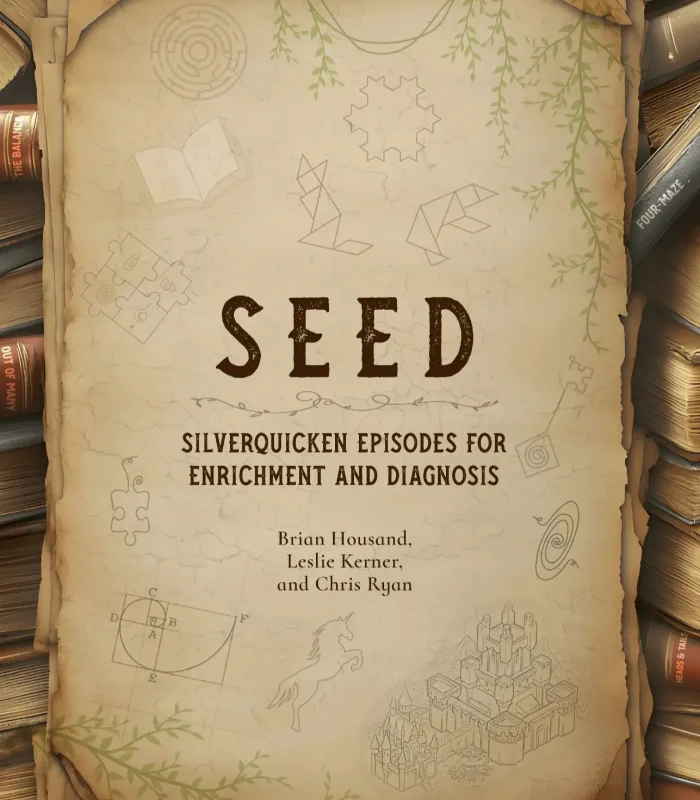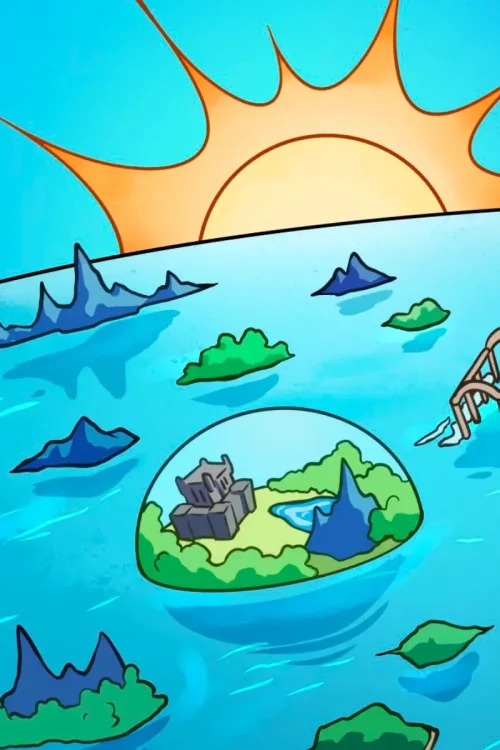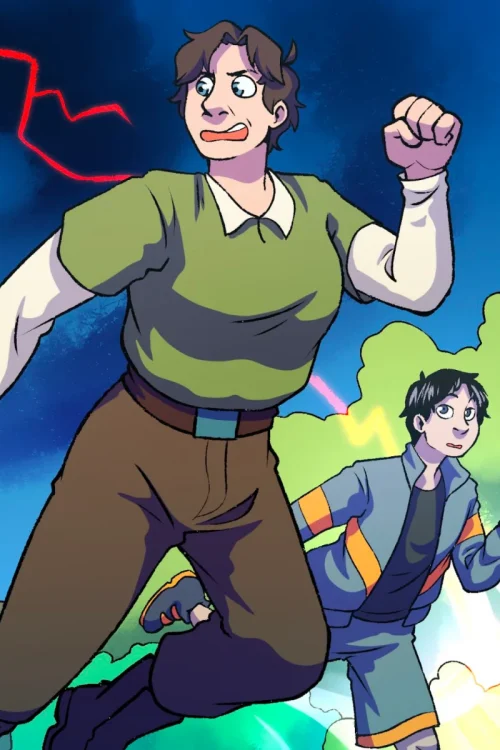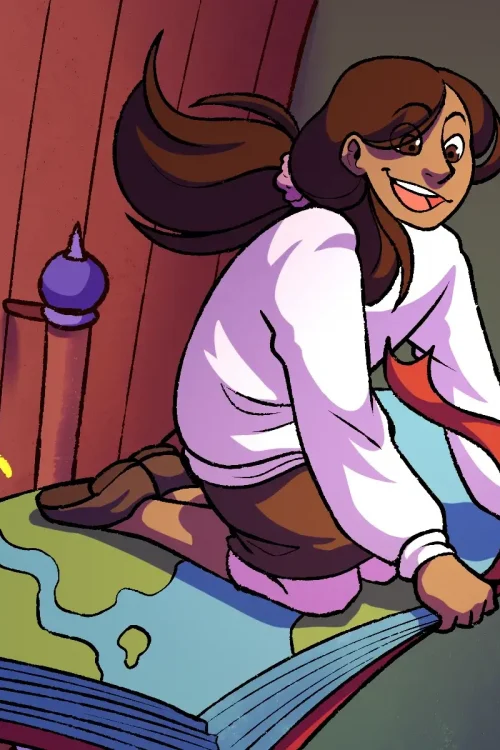SEED: Silverquicken Episodes for Enrichment and Diagnosis
SEED Resources–
Bring The Learning to Life






SEED: Silverquicken Episodes
for Enrichment and Diagnosis
SEED helps educators identify and nurture talent through story-based activities that develop both thinking and feeling skills. We believe in the power of narrative to transform education—especially immersive fictional stories that empower kids to take risks and explore new ideas without fear. With defenses down, learners can tackle rigorous challenges, consider multiple viewpoints, and connect with classmates in long-lasting ways. We can’t wait for the SEED stories to enable this kind of growth for your learners!

Allison H.
Tacoma, WA
SEED Resources
Story Illustrations & MORE
Bring each episode to life by downloading full-color images and sharing them with your learners! Project these while reading the episode’s story aloud, immersing learners in the adventure and mystery of the Silverquicken dream world.
Google Slides: Clicking will prompt you to make a copy of the slides, which you can then move anywhere on your Google Drive, convert to PowerPoint, or customize as needed.
PDFs: Clicking a PDF link will open a preview, allowing you to download or print the document.
SEED VAULT PDFs: For Episodes 4, 8, 12, and 16 (the Reflective episodes), you can download a SEED VAULT PDF for easy printing.
Episode 0 - Welcome to Silverquicken
Cycle 1
Episode 1 - Four-Maze
Episode 2 - Dream Snails
Episode 3 - RPS Robots
Episode 4 - The Struggle
Story Illustration Slides
ARTIFACTS TO PRINT
SEED VAULT Cycle 1
Cycle 2
Episode 5 - Cipher Map
Episode 6 - Bridge World
Episode 7 - Where’s Number 3?
Episode 8 - The Balance
Story Illustration Slides
ARTIFACTS TO PRINT
SEED VAULT Cycle 2
Cycle 3
Episode 9 - Whisper & Noise
Episode 10 - Many & Varied
Episode 11 - Heads & Tails
Episode 12 - The Way Forward
Story Illustration Slides
ARTIFACTS TO PRINT
SEED VAULT Cycle 3
Cycle 4
Episode 13 - Herrings are Red
Episode 14 - Fate is Fickle
Episode 15 - Out of Many
Episode 16 - The Quest
Story Illustration Slides
ARTIFACTS TO PRINT
SEED VAULT Cycle 4
RESEARCH BIBLIOGRAPHY
The skills identified and exercised within SEED have strong underpinnings in educational theory, psychological research, and/or other fields. Expand this section for our research bibliography, organized by the page number on which each reference occurs.
Page 2
Duckworth, A., Levin, D., Randolph, D. (2024). About Character Lab. https://characterlab.org/about/
Williams, F. E. (1969). Models for encouraging creativity in the classroom by integrating cognitive-affective behaviors. Educational Technology, 9(12), 7–13. https://psycnet.apa.org/record/1971-23874-001
Page 5
Pólya , G. (2004). How to Solve It: A New Aspect of Mathematical Method. Princeton University Press. https://press.princeton.edu/books/paperback/9780691164076/how-to-solve-it
Oakley, B. (2014). A Mind for Numbers: How to Excel at Math and Science (Even If You Flunked Algebra). TarcherPerigee. https://barbaraoakley.com/books/a-mind-for-numbers/
Duhigg, C. (2016, February 25). “What Google Learned From Its Quest to Build the Perfect Team.” The New York Times Magazine. https://www.nytimes.com/2016/02/28/magazine/what-google-learned-from-its-quest-to-build-the-perfect-team.html
Dweck, C. (2007). Mindset: The New Psychology of Success. Ballantine Books. https://www.penguinrandomhouse.com/books/44330/mindset-by-carol-s-dweck-phd/
Duckworth, A. (2016). Grit: The Power of Passion and Perseverance. Scribner. https://angeladuckworth.com/grit-book/
Renzulli, J. (1998). “Three-Ring Conception of Giftedness.” In Baum, S. M., Reis, S. M., & Maxfield, L. R. (Eds.). (1998). Nurturing the gifts and talents of primary grade students. Mansfield Center, CT: Creative Learning Press. https://gifted.uconn.edu/schoolwide-enrichment-model/three-ring_conception_of_giftedness/
Page 6
Collins, J. (2001). Good to Great: Why Some Companies Make the Leap… And Others Don’t. Harper Business. https://www.jimcollins.com/concepts/Stockdale-Concept.html
Meinel, C., Leifer, L., Plattner, H. (Eds.). (2011). Design Thinking: Understand – Improve – Apply. Berlin; Heidelberg: Springer-Verlag. pp. xiv-xvi. https://link.springer.com/book/10.1007/978-3-642-13757-0
Johnson, K. H. (2008). The Funniest One in the Room: The Lives and Legends of Del Close. Chicago Review Press. pp. 52-53. https://www.chicagoreviewpress.com/the-funniest-one-in-the-room-products-9781569764350.php
Moritz, S., Lysaker, P. H. (2018). “Metacognition – What did James H. Flavell really say and the implications for the conceptualization and design of metacognitive interventions.” Schizophrenia Research, Volume 201, November 2018. 20-26. https://doi.org/10.1016/j.schres.2018.06.001
Project Zero’s Thinking Routines Toolbox. (2015). Harvard Graduate School of Education. https://pz.harvard.edu/resources/connect-extend-challenge
Williams’ taxonomy: see above under page 2.
Torrance, E. P. (2002). The Manifesto: A Guide to Developing a Creative Career. Praeger. https://www.bloomsbury.com/us/manifesto-9781567506464/
Help us grow too!
Is there something else you’d like to see? Did one episode really stand out? Anything you’d like for us to change? Please let us know!

